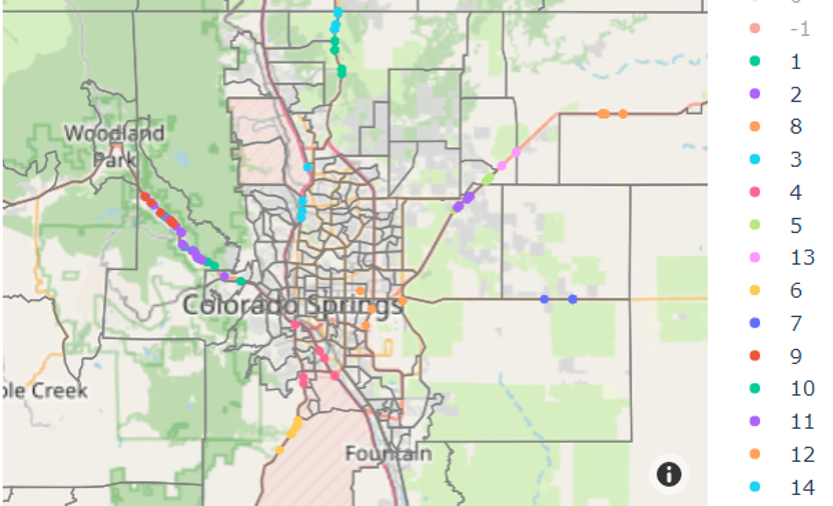Portfolio
21st Century Community Learning Centers
The Department of Education provides funding for the academic enrichment of students from high-poverty and low-performing schools. As part of this grant, learning centers are required to have an outside evaluation team. I collaborated with a group of ten social scientists as the data scientist for the Valley View School District 21CCLC program evaluation team. I advised best practices on real time data collection, merged disparate data sources, formatted data to complete annual reports to the Illinois School Board of Education, performed statistical test to evaluate the program performance, and created visuals to update teachers and administrators about the current state of the program.

Aeolus’ Bag of Winds (and other weather events)
When severe weather occurs, local drivers are well aware of the streets and highways to avoid. Drivers collect an internal database of deficiencies in local transportation infrastructure by overserving traffic accidents that occur under similar weather conditions. By applying Density Based Clustering of Applications with Noise (DBSCAN) on accident data, we can identify areas in the transportation system that might be underperforming under specific weather conditions, such as wind. Additionally we implemented a custom algorithm, GEOspatial Clustering Clustering of Climate Related Accidents with Noise (GEOCCRAN) that performs better than DBACAN on clustering areas across rural and urban areas.

Predictive Modeling and Analysis of Hockey Using Markov Chains
Hockey is a notoriously difficult game to predict. However, if we consider the game of hockey as a series of game states i.e. (home team up by 1, 9 players on the ice, etc) then we can apply a Markov assumption and predict the next game state from the previous game state. Using NHL game data from 2013 we trained a Markov Model to predict the real time win percentage for the home team for two models. The first model analyzes the affect of shots on goal on the game of hockey, by define game states as shots on goal and goal differential. The second model describes different manpower scenarios by parameterizing game states as home team players on the ice, away team players on ice, and goal differential.
